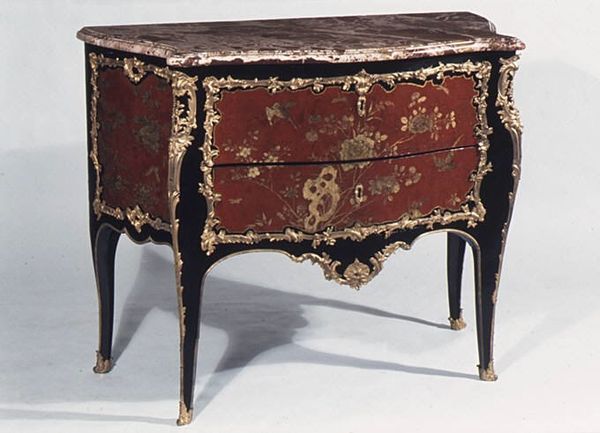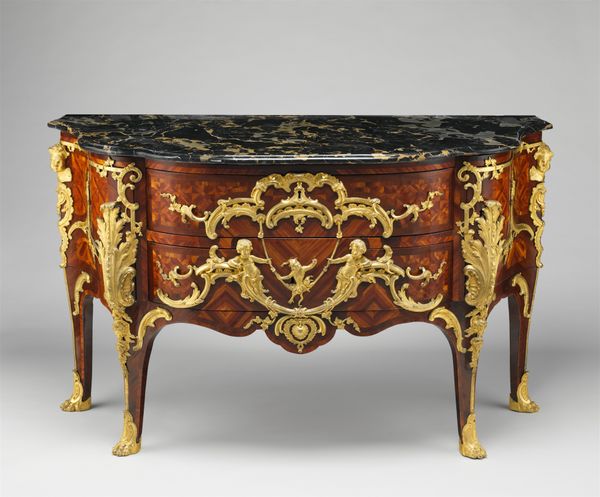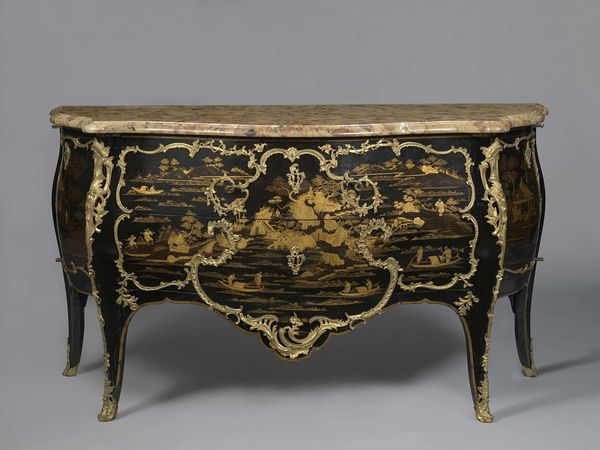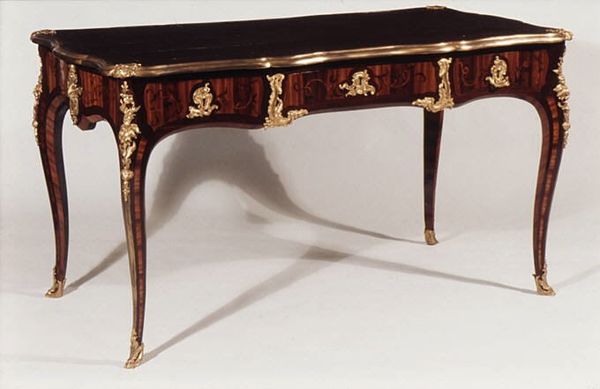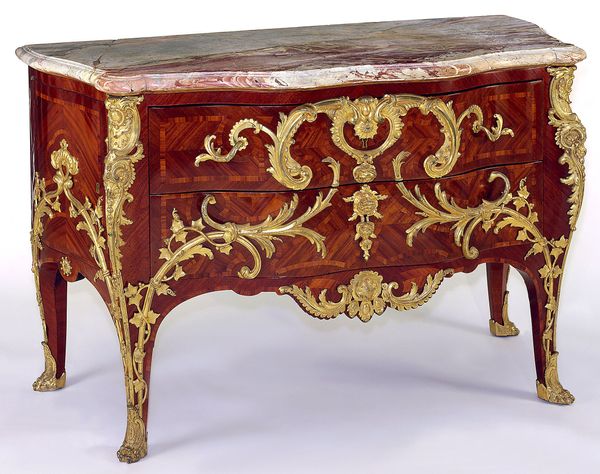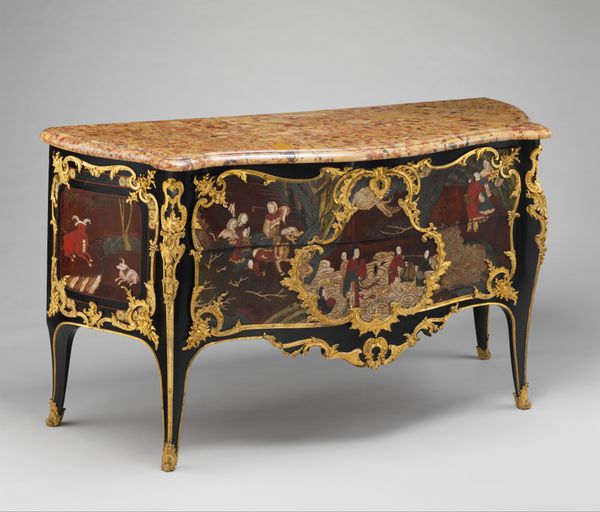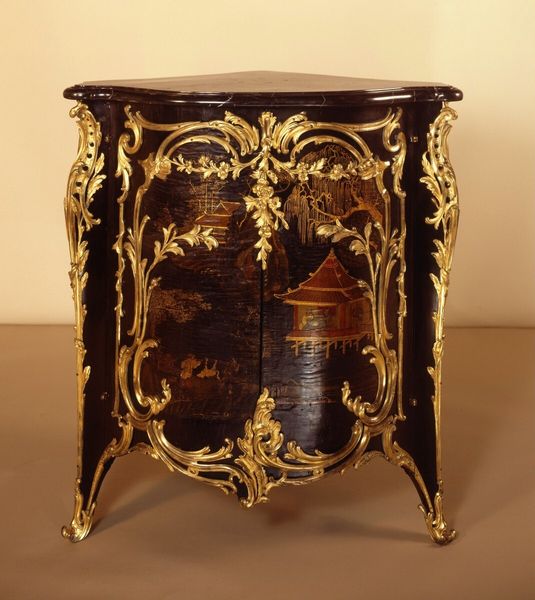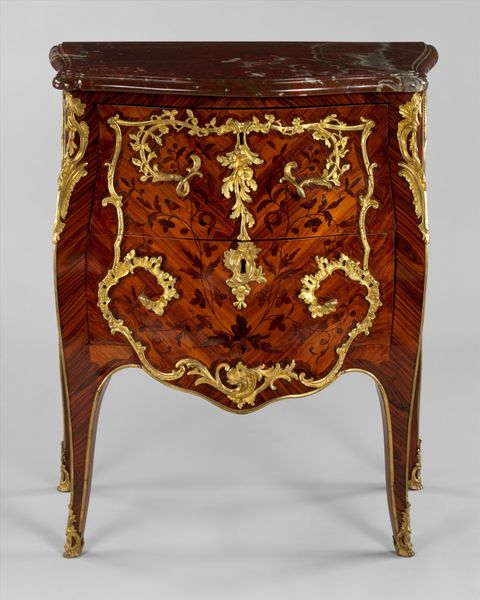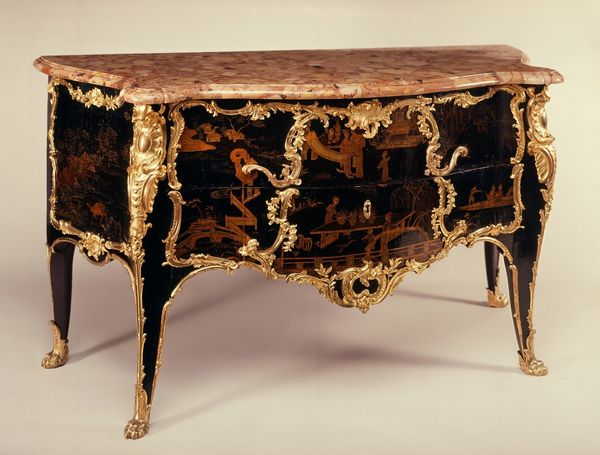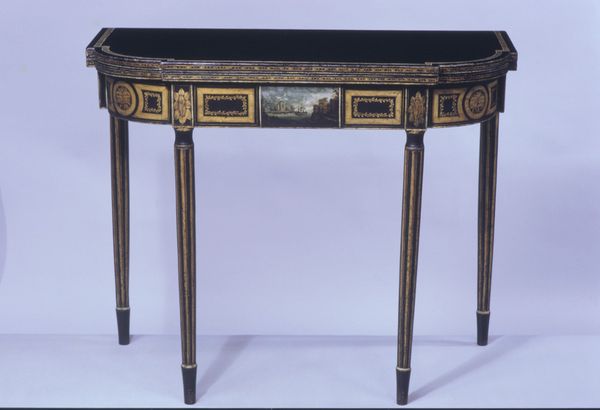
carving, sculpture, wood, marble
#
carving
#
stone
#
sculpture
#
furniture
#
landscape
#
sculpture
#
orientalism
#
wood
#
decorative-art
#
marble
#
rococo
Dimensions: Overall: 32 1/2 × 41 1/2 × 20 3/4 in. (82.6 × 105.4 × 52.7 cm)
Copyright: Public Domain
This commode was made in France by Martin Criaerd, likely in the mid-18th century, using wood, marble, gilt bronze, and lacquer. The black lacquer finish is particularly striking, with ornate gilt bronze mounts adding further opulence. But look closer, and you’ll notice that the lacquer isn't quite what it seems. It’s a European imitation of Asian lacquer, known as vernis Martin. While true lacquer was meticulously built up over many layers, vernis Martin was a quicker, cheaper alternative. This imitation allowed for mass production, bringing a taste of the exotic to a wider clientele. The commode's form and decoration speak to the increasing availability of luxury goods in the 18th century. Its creation involved a division of labor: the ébéniste crafted the wooden structure, the fondeur-ciseleur cast and chased the bronze mounts, and the doreur applied the gilding. By considering the object in this way, we can recognize that even the most apparently unique objects are the products of many hands, and complex social systems.
Comments
No comments
Be the first to comment and join the conversation on the ultimate creative platform.
